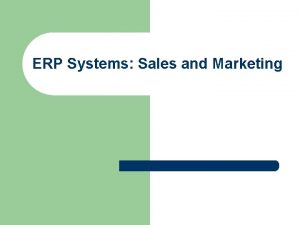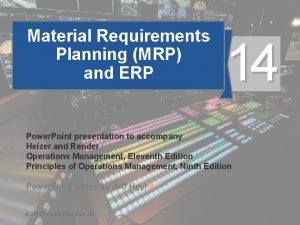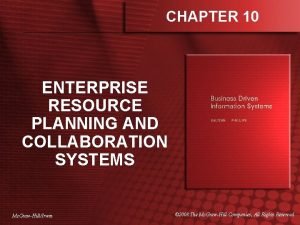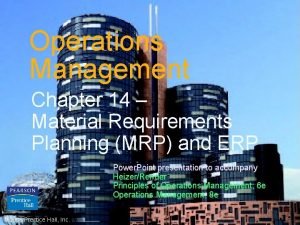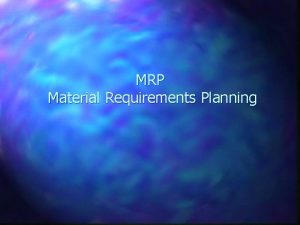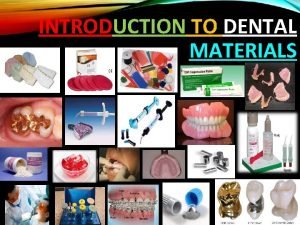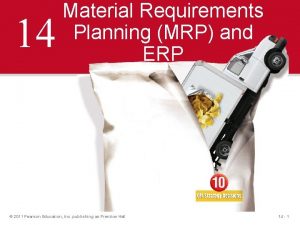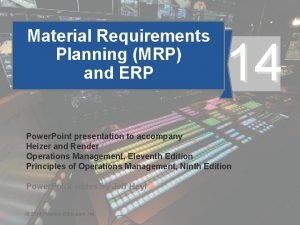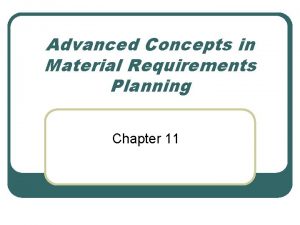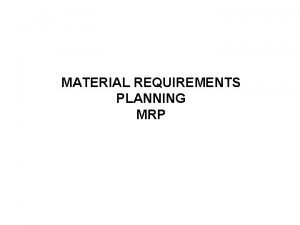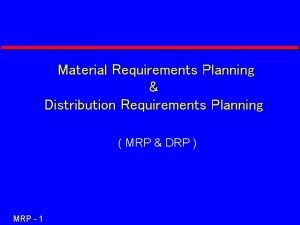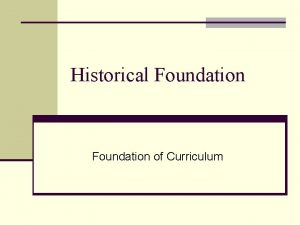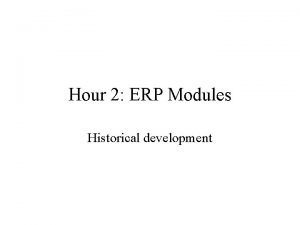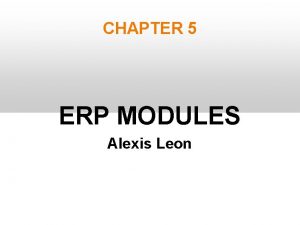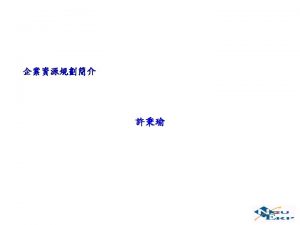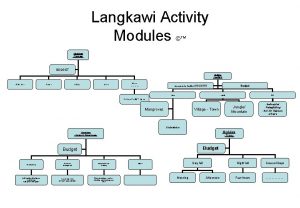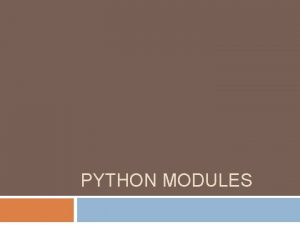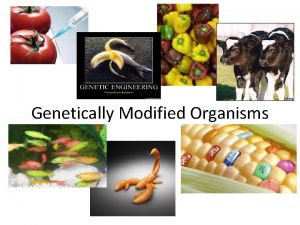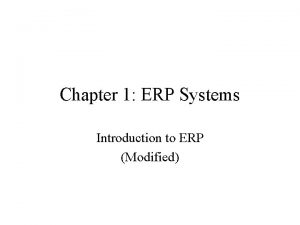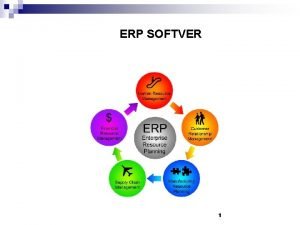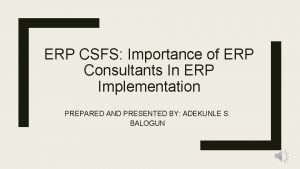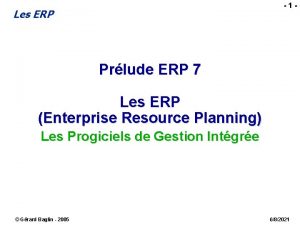ERP Modules Modified ERP historical development Material requirements













- Slides: 13

ERP Modules (Modified)

ERP historical development • • Material requirements planning (MRP) Inventory reordering tool Evolved to support planning MRPII extended to shop floor (factory housing the machineries) control

Comparative Modules SAP Oracle People. Soft JDEdwards SD Marketing, Sales Supply chain Order management MM Procurement Supplier relationship Inventory, procurement PP Manufacturing QM Manufacturing mgmt Enterprise perform Technical foundation PM Service Enterprise service HR Human Resources Human capital mgmt Workforce management FI Financials Financial mgmt sol. Financial management CO Time & Expense mgmt AM Asset Management Enterprise asset mgmt PS Projects Project management WF Order Management Contracts Subcontract, real estate

BAAN Industry-Specific Variants Discrete Manufacturing Aerospace & Defense Automobile Industrial Machinery Electronics Telecommunications Construction Logistics Process Manufacturing Chemicals Food & Beverage Pharmaceuticals Cable & Wire Pulp & Paper Metals

People. Soft Industry Solutions Communications Consumer Products Federal Government Financial Services Healthcare High Technology Industrial Products Public Sector Professional Services Staffing Utilities Wholesale Distribution Higher Education

Microsoft Great Plains Business Solutions Accounting & Finance Customer Relationship Management E-Business Human Resources & Payroll Manufacturing Project Accounting Supply Chain Management

Relative ERP Module Use (Mabert et al. 2000; Olhager & Selldin, 2003) Module Use reported - US Use reported – Sweden Financial & Accounting 91. 5% 87. 3% Materials Management 89. 2% 91. 8% Production Planning 88. 5% 90. 5% Order Entry 87. 7% 92. 4% Purchasing 86. 9% 93. 0% Financial Control 81. 5% 82. 3% Distribution/Logistics 75. 4% 84. 8% Asset Management 57. 7% 63. 3% Quality Management 44. 6% 47. 5% Personnel/HR 44. 6% 57. 6% Maintenance 40. 8% 44. 3% R&D Management 30. 8% 34. 2%

Relative Module Use • Mabert et al. (2000) surveyed Midwestern US manufacturers – Some modules had low reported use (below 50% in red) – Financial & Accounting most popular • Universal need • Most structured, thus easiest to implement – Sales & Marketing more problematic

Why implements Module instead of System? • Cost: – Cheaper to implement part of system – Conflicts with concept of integration • Best-of-Breed module – Mabert et al. found only 40% installed system as vendor designed • 50% used single ERP package; 4% used best-of-breed – Different vendors do some things better – Conflicts with concept of integration

Middleware - integrate external software • Third-party software – Integrate software applications from several vendors – Could be used for best-of-breed – Usually used to implement “add-ons” (specialty software such as customer relationship management, supply chain integration, etc. )

Customization - tailor ERP to organization • Davenport (2000) choices: – Rewrite code internally – Use existing system with interfaces • Both add time & cost to implementation • The more customization, the less ability to seamlessly communication across systems

Federalization • Federation - different versions of ERP in different organizational subelements • Davenport (2000) – Roll out different ERP versions by region – Each tailored to local needs • Core modules shared • some specialty modules unique – Used by: • Hewlett-Packard • Monsanto • Nestle

Summary • Core idea of ERP complete integration • In practice, modules used – More flexible, less risk – Can apply best-of-breed concept • Ideal, but costly – Related concepts • Middleware – integrate external software • Customization – tailor ERP to organization • Federalization – different versions of ERP in different organizational subelements
 Sales and marketing modules in erp system
Sales and marketing modules in erp system Community development history
Community development history Closed loop mrp
Closed loop mrp Core and extended erp components
Core and extended erp components Product structure tree example
Product structure tree example Material requirements planning
Material requirements planning Ideal requirements of dental materials
Ideal requirements of dental materials Material requirements planning
Material requirements planning Gross material requirements plan
Gross material requirements plan Material requirements planning concepts
Material requirements planning concepts Net material requirements plan
Net material requirements plan Mrp drp
Mrp drp Historical basis of curriculum
Historical basis of curriculum Evolution of community health nursing
Evolution of community health nursing
